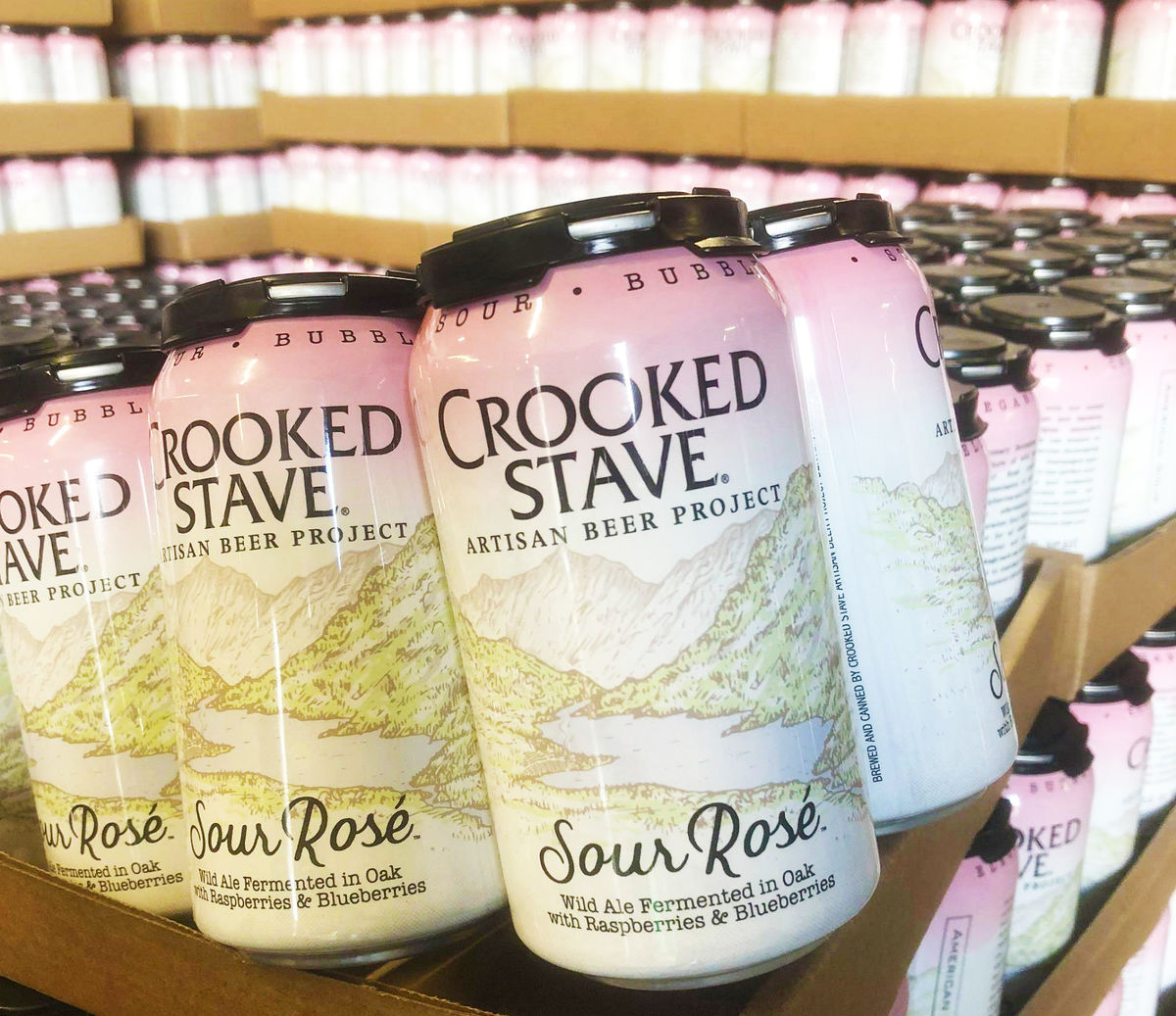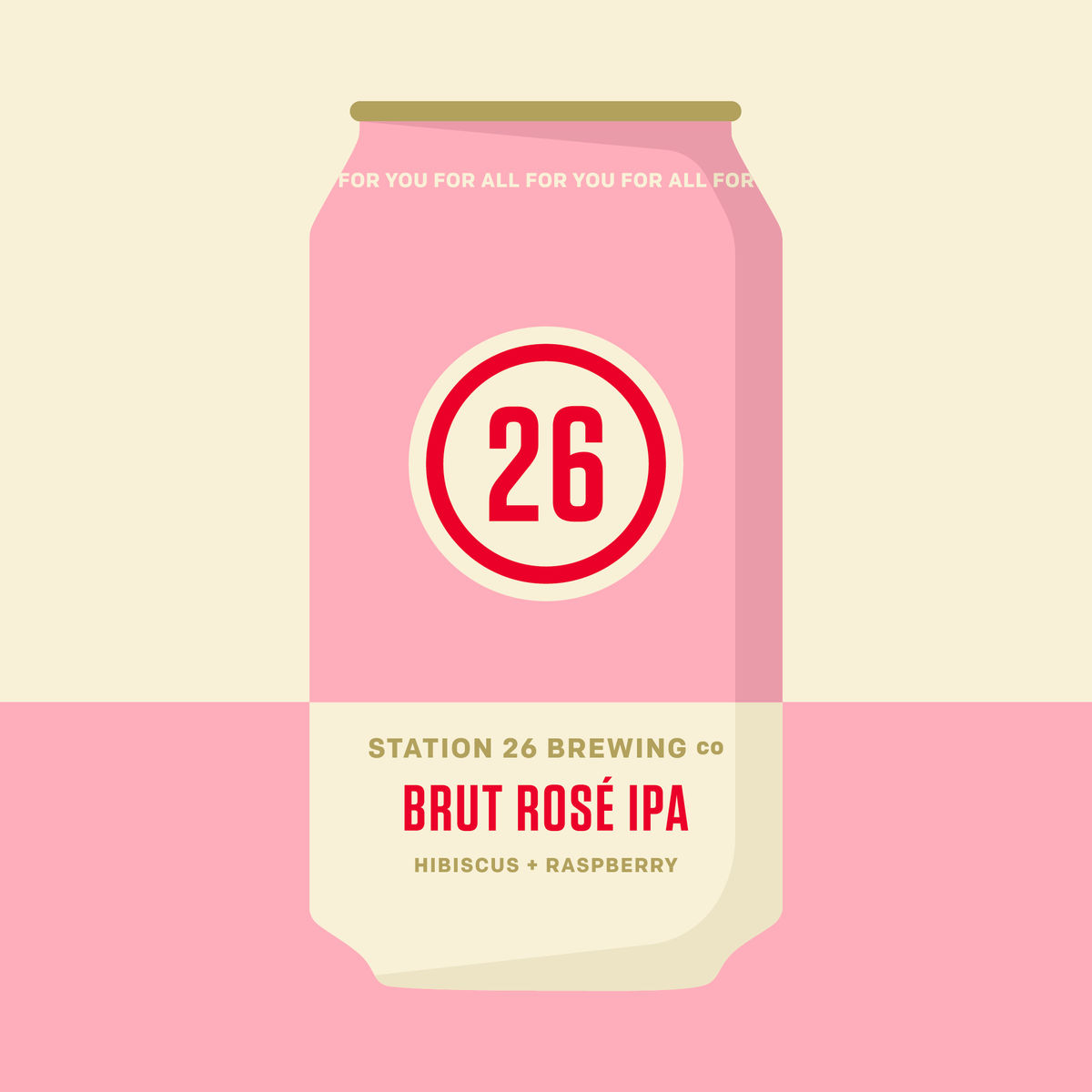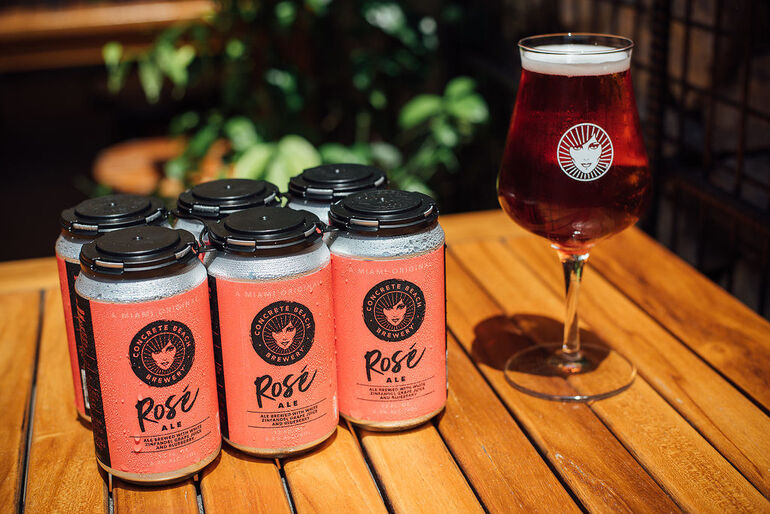Start 14-Day Trial Subscription
*No credit card required

The Rise of Rosé Beers
Rosé isn't just brunching gossip fuel. The once ignored blush beverage, known for its light, flowery and fruity qualities, is now a staple at most restaurants. It was only a matter of time before rosé found its way into a beer can. Over the past year, rosé-inspired brews have been tapped in breweries across the country like some out-of-hand gender reveal. But for good reason—the qualities of rosé wine blended with beer's effervescence appeal to many palates and make for suitable summer swill.
Incorporating wine flavors into beer is nothing new. Trailblazers in the field, Firestone Walker, launched their operation in California’s Central Coast wine country in Paso Robles. Their proximity to grape vines and the brewers’ winemaking history inevitably inspired their brewing process. Firestone’s 1996 debut, the Double Barrel Ale (DBA), was aged in chardonnay oak barrels. At the time, they were one of the few using the technique.
“Now you would be hard-pressed to find a brewery that doesn’t utilize barrel-aging,” said Firestone Walker Brewmaster Matt Brynildson.
Adding years of unique flavors and aromas into beer through old wine—or spirit—barrels is a magnetic draw for craft brewers. What started as experimental has become standard, so it’s unsurprising that rosé joined the party.
Last summer, New York’s famed Brewery Ommegang released Saison Rosé, a vivacious blend of an oak barrel-aged saison mixed with a hibiscus saison co-fermented with chardonnay grape juice. Victory Brewing Co. out of Pennsylvania will soon release Rosé Monkey made with their famous Golden Monkey Belgian-style beer aged in chardonnay oak barrels and finished with cherries. Even Shiner, in collaboration with Kiepersol Vineyards out of Tyler, Texas, released a Rose Palé Ale made with fermented grape must and aged in white wine oak barrels.

Adding years of unique flavors and aromas into beer through old wine—or spirit—barrels is a magnetic draw for craft brewers. What started as experimental has become standard, so it’s unsurprising that rosé joined the party.
Not all rosé-inspired suds are aged in wine barrels, though. In January, Firestone released Rosalie, a beer-wine hybrid co-fermented with chardonnay and other aromatic grape varietals. (Rosé wine is tinted by the skins of red grapes.)
Brynildson said working with grape juice on a large scale has its challenges. Grapes are harvested in one month and the juice has to be stored year-round. Firestone harvested 180 tons of white wine grapes from their neighbor in Paso Robles, Castoro Winery. There are very little sulfur additions, which is typical in a winery. The juice was chilled and cross-flow filtered at the winery. The juice is stored in near-freezing temperatures at the brewery until they are ready to use it. They’ve utilized about half so far. Brynildson said he is constantly tasting grape juice. A major difference between the wine and beer is the alcohol percentage: Rosalie weighs in at 5 percent, while rosé wines are around 10 to 14 percent.
Hibiscus is also a key ingredient Rosalie. The flower is a common addition in rosé brews because it adds a floral characteristic that is common in rosé wines. Brynildson said the flower’s citric acid contributes a wine-like acidity to beer and creates the signature hue. The vibrant visual undoubtedly adds to the drink’s appeal.
“Back when I went to brewing school, we were told early on that people drink with their eyes first and foremost,” Brynildson said. He added that people will judge a beer by its clarity—this was before the haze craze—foam and color before they taste it.
Many rosé beers and ciders rely on ingredients like hibiscus or other tart red fruits and do not use wine grapes or wine barrels at all. Before yelling "Imposter!” at the beer cooler, consider the similarities. Many breweries are calling it “rosé” because of its color. A recent collaboration between Denver’s Crooked Stave, known for their wild yeast, and Asheville's Thirsty Monk, known for their hops, makes the case.
“We both were fans of a saison made from [Michigan's] Jolly Pumpkin that has rosé petals and hibiscus,” said Thirsty Monk head brewer, Brian Grace. “We decided to go with that and the Brett Brut Rosé IPA was born.”
BBR is made with German hops, creating citrus and berry-like aromas. The enzyme, Brettanomyces, create a dry, Champagne-like sipping experience. Grace said the result is light, bright, slightly tart and earthy.
“It is a mimicry. They kind of have a similar mouthfeel and aroma as sparkling rosé but it’s not wine-beer,” Grace said.
Anderson Valley’s Framboise Rose Gose, made with rose hips and raspberry, and Crooked Stave’s own rosé-inspired brew, Sour Rosé, a wild ale fermented with raspberries and blueberries, employ the same strategy.

Crooked Stave’s own rosé-inspired brew, Sour Rosé is a wild ale fermented with raspberries and blueberries that has a similar mouthfeel and aroma as a sparkling rosé.
These are just a few widely available blushing beverages, but there are many smaller operations that have created similar seasonal one-offs. The rosy wave begs the question if the trend has any lasting power. With its current popularity, it’s difficult to gauge the fate of rosé beers.
From a marketing standpoint, it might seem as though rosé beers alienate half of the drinking pool because the wine has been stamped as a drink for women. Marketing manager for Denver’s Station 26, Hamlet Fort, said that’s not the case. The brewery will be canning their own raspberry-hibiscus version, Brut Rosé, mid-May.
He said there were similar concerns about one of their flagship brews, Tangerine Cream, but guys love fruity beers as much as anyone. Fruits are democratic ingredients with broad appeal compared to, say, coconut or coffee, both of which were able to carve out a place for themselves in the craft industry.
“I have a hard time seeing the rosé wine trend going away,” Brynildson said.
However, he doesn’t have the same confidence in pink brews despite their thirst-quenching, pool party-pleasing power. Commercial brands like Angry Orchard and Crispin have released rosé ciders, pushing the trend into the gimmick realm. But many other brewers have tactfully utilized the delicate qualities that make rosé wine shine and made equally appealing beers.
Will the world, in fact, rosé all day?
It depends on if beer drinkers find it interesting enough, Brynildson said.

(Photos Courtesy Respective Breweries)



